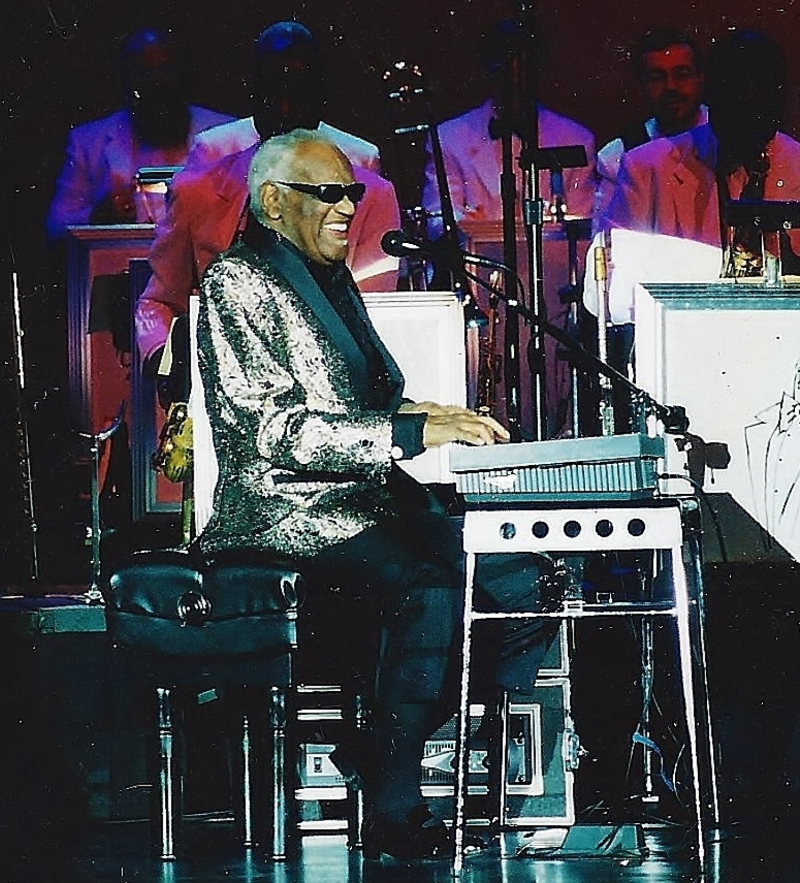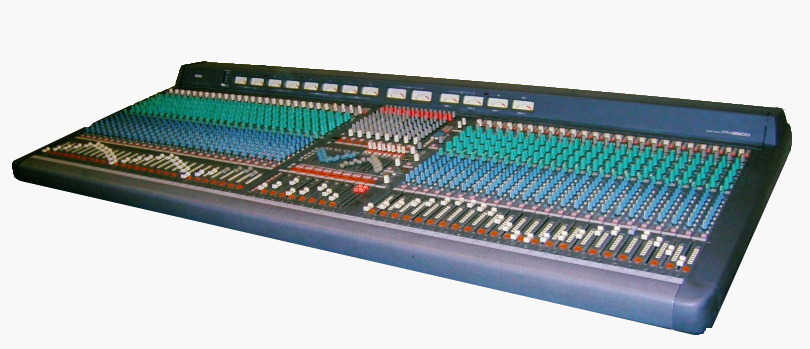Three Mics for Ray Charles
Posts in #music are from my previous career as a live and studio sound engineer in the 90’s. Feel free to skip ahead if you’re only here for the tech :)
The Sun Theatre, Anaheim, CA. June 4th 1999
Way back in 1999/2000 I was the House Sound Engineer at the Sun Theatre in Anaheim California (now called “The Grove of Anaheim”). It was pretty new, launched in 1998 as what WikiPedia calls the “ill-fated” Tinseltown :), and then became a music venue in 1999. I happened to live a few minutes away at the time, and had been working for Industrial Sound in LA as a sound engineer, so they suggested I might want this gig since it was literally down the road.
Being the “house” sound engineer can be great or sometimes more challenging (ICP, Toto spring to mind), but on the odd occasion, it can be truly sensational. I’ll explain a bit of the basics in the next section, and then get on to the exciting part.
Sidebar: I was just reminded of this experience by an anecdote from The Edge on the U2 episode of the always excellent Tim’s Listening Party Podcast by Tim Burgess. On it, he mentioned a seminal Live album by Ray Charles recorded in 1958/59 noting that it was apparently recorded with “one microphone”!!! That rang a bell with me for sure!
What is a “House” engineer anyway?
Usually bands have backline/guitar/drum/keyboard techs, tour managers etc and a sound engineer they travel with, as long as they can stretch the budget. I was the touring sound engineer for The Specials for 5 years in the 90’s so I was in that exact role for them, but I’ll save those stories for future posts.
Sometimes bigger acts may also have a complete sound and lighting rig (Toto again..) which is another whole heap of pain since we needed to strike (take down) the entire in-house system, help them load in and set up their systems, and worst of all, repeat that in reverse at the end of the night. Often ended up a 4am finish in those cases, but thankfully quite rare since in the case of the Sun Theatre, we had an in-house state of the art EAW flown sound reinforcement system, a Yamaha PM3500 52 channel mixing desk, great monitor rig and mics etc.
The other side of this equation is the house sound engineer and crew who are not on the road but work at a particular venue, and have to keep their touring counterparts happy with the equipment, sound, basically anything (yes… anything). Usually this is still ok, sometimes also great (like Pablo Wheeler the engineer with Bob Dylan was amazing) and then also sometimes can be a bit of a challenge for various reasons. People management skills and restraint are often required.
Enter, Mr Ray Charles!
 Not my photo, but from a show few months later I found online
Not my photo, but from a show few months later I found online
Anyhow, I remember being really excited when I saw “Ray Charles” coming up on the calendar for early Jun 2000 and when the day arrived the first order of business was get to the theatre, fire up the systems and wait for the artist, band and their entourage to arrive.
I quickly learned that Ray didn’t have a sound engineer and it would be my job on the night. Wow. You dream of these days as a house engineer. And today was one of them! Anecdotally, I found many of these artists from the 50’s and 60’s like James Brown, Ray Charles, John Lee Hooker didn’t tend to have their own sound engineer. They kind of expected it was the house’s responsibility and trusted in that. Maybe to save a few $$ too. Who knows?
Anyhow, the band consisted of drums, bass, guitar, Ray on keys of course, and a brass section. As they were setting up I perused the stage, the instruments etc, planning how I would mic everything up and what would work the best.
Three Mics.. pardon? Did you say “3”?… whut?
I walked back to our state-of-the-art 52 channel PM-3500 at front of house to start marking up the channels, when Ray’s manager approached and announced they’d only be needing three mics for the show. I must have done a double take. “What??!” Internally my world crumbling knowing I would be the guy behind the mixing desk that night on what surely would be an atrocious sounding gig and have to deal with the wrath of the 1500 strong audience.
 A Yamaha PM-3500 52 channel mixing desk. 49 unused for Ray
A Yamaha PM-3500 52 channel mixing desk. 49 unused for Ray
He was unrepentant and directed me to put one condenser “overhead” mic over the rhythm section, one over where the brass were standing and one vocal mic for Ray. I can’t remember but I think we must have had a DI (direct input) from the amp Ray used for his keyboard.
How wrong I was
Well, I have to say this gig was one of the highlights of my career. What I really hadn’t expected or accounted for was these musicians were from a different era entirely. Their musicianship was of course out of this world, but they also had an incredible understanding of dynamics, sound and how to manage their own mix. If the sax player was taking the lead, he would just step forward. If there was a breakdown they would step back and let the rhythm section take over.
It sounds obvious, but most bands have everything mic’d up, and even occasionally maxed out the 52 channels we had to work with. Just for the drums we’d routinely have kick, snare top, snare bottom, hats, 3 or 4 tom mics, two overheads, maybe one under the hats too, and sometimes a second kick mic. There you go, that’s 10 to 12 mics already just for the drummer!! Then bass amp, bass DI, often multiple guitar amps to mic, stereo keyboards, vocals, backing vocals, samplers… the list goes on.
So, that’s the story of the day I was schooled by Ray Charles and his band. What a night! I have a lot more of these stories to share based on my 15 years as a sound engineer, so don’t forget to check back or subscribe to the RSS feed!